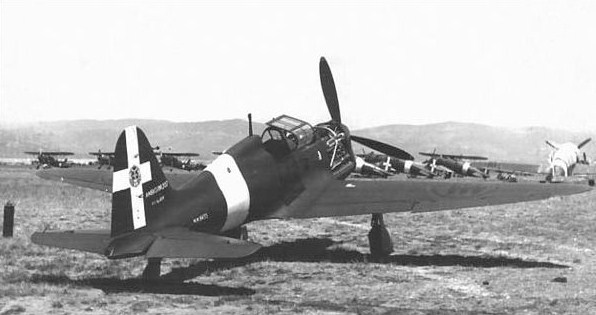BarnOwlLover
Staff Sergeant
This is kind of what I've been working towards and thinking of for a while now. Let's say there's a fictional country that's aligned with the Allies, and is able to design and make their own fighter aircraft. Also, the country is relatively isolated from Axis attacks and is heavily defended against the attacks they can make.
Now that those conditions are out of the way, this country wants to make its own fighter aircraft and such to be self-sufficient in terms of defense. I'm thinking that this aircraft would be along the lines of an advanced version of the Ki-61 with advanced features. Or perhaps a lightweight version of the NA-73X (P-51 Mustang prototype) or even a Spitfire if R.J. Mitchell and especially Joe Smith could do it over again.
Basically, this aircraft was envisioned back in the late 1930s, with the expectation that it'd be 3-4 or so years before it'd be ready. Said country also has obtained a license to build Rolls-Royce Merlin engines with options of building other later designs (notably the Griffon), and it was envisioned to use a 1500+ derivative of the Merlin (namely the two-stage supercharged versions), which is why the 3-4 year wait period (getting 1500+ hp, and either good turbo-supercharging or two stage supercharging).
And this aircraft should have an advanced but relatively simple structure in terms of aerodynamics and build, similar to the aircraft that were mentioned. As a light fighter, it's sort of biased towards being an interceptor and air superiority fighter (short and medium range), but can do long range missions with some modifications.
Also, armament will be sort of a compromise in general purpose roles along the lines of later Italian fighers, namely 2 .50 MGs (400 rpg) and 2 20mm cannons (200 rpg), though this can be scaled up to 4 20mm cannons (150 or 200 rpg depending on role or mission).
Main performance specs are a top speed of over 400 mph, fast climb, excellent maneuverability, and ability for light/medium ground attack.
By say 1942 or shortly afterwards, would such a fighter be possible to make given what I've laid out?
Now that those conditions are out of the way, this country wants to make its own fighter aircraft and such to be self-sufficient in terms of defense. I'm thinking that this aircraft would be along the lines of an advanced version of the Ki-61 with advanced features. Or perhaps a lightweight version of the NA-73X (P-51 Mustang prototype) or even a Spitfire if R.J. Mitchell and especially Joe Smith could do it over again.
Basically, this aircraft was envisioned back in the late 1930s, with the expectation that it'd be 3-4 or so years before it'd be ready. Said country also has obtained a license to build Rolls-Royce Merlin engines with options of building other later designs (notably the Griffon), and it was envisioned to use a 1500+ derivative of the Merlin (namely the two-stage supercharged versions), which is why the 3-4 year wait period (getting 1500+ hp, and either good turbo-supercharging or two stage supercharging).
And this aircraft should have an advanced but relatively simple structure in terms of aerodynamics and build, similar to the aircraft that were mentioned. As a light fighter, it's sort of biased towards being an interceptor and air superiority fighter (short and medium range), but can do long range missions with some modifications.
Also, armament will be sort of a compromise in general purpose roles along the lines of later Italian fighers, namely 2 .50 MGs (400 rpg) and 2 20mm cannons (200 rpg), though this can be scaled up to 4 20mm cannons (150 or 200 rpg depending on role or mission).
Main performance specs are a top speed of over 400 mph, fast climb, excellent maneuverability, and ability for light/medium ground attack.
By say 1942 or shortly afterwards, would such a fighter be possible to make given what I've laid out?
Last edited:

